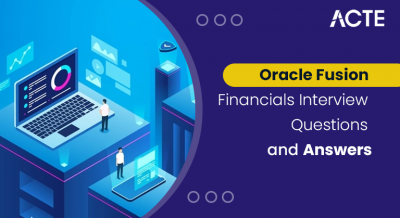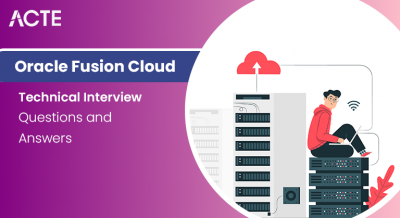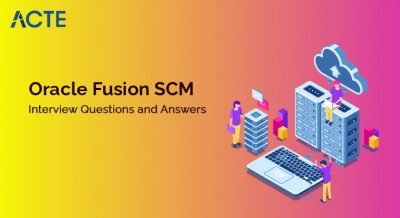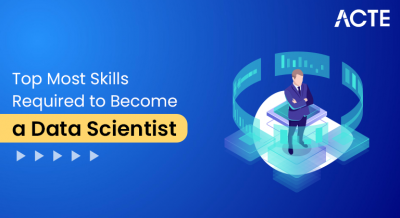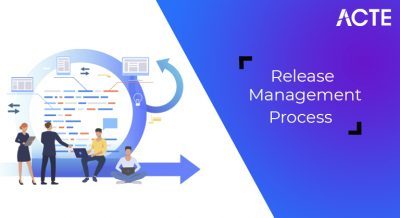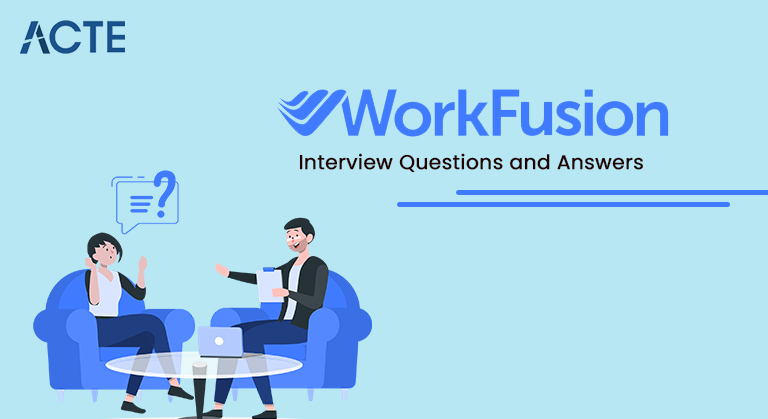
Work Fusion is a software as a service cloud computing platform that uses cloud-sourced workers to teach algorithms to automate a wide variety of knowledge work, particularly in the final services, e-commerce, and retail industries. It is the complete automation solution for global operations, combining into one platform the core capabilities to digitize complex business processes, business process management, robotic process automation, work Force orchestration a d machine learning-powered cognitive automation. It creates technology that makes economies work. So explore yourself as an RPA developer, RPA Engineer, Data Scientist, Channel Executive, Corporate Consultant, Advisory Consultant, Lead Java Developer by looking into Work Fusion Job interview questions and answers given.
1. What is WorkFusion, and what does it specialise in?
Ans:
WorkFusion is an intelligent automation platform that provides automation solutions for various business processes. It combines robotic process automation (RPA), artificial intelligence (AI), and machine learning (ML) to automate repetitive tasks and optimise workflows.
2. How does WorkFusion differ from traditional RPA solutions?
Ans:
WorkFusion differs from traditional RPA solutions by integrating AI and ML capabilities. While RPA typically automates rule-based tasks, WorkFusion’s Intelligent Automation Cloud goes beyond by incorporating cognitive automation, natural language processing, and machine learning for more advanced and adaptive automation.
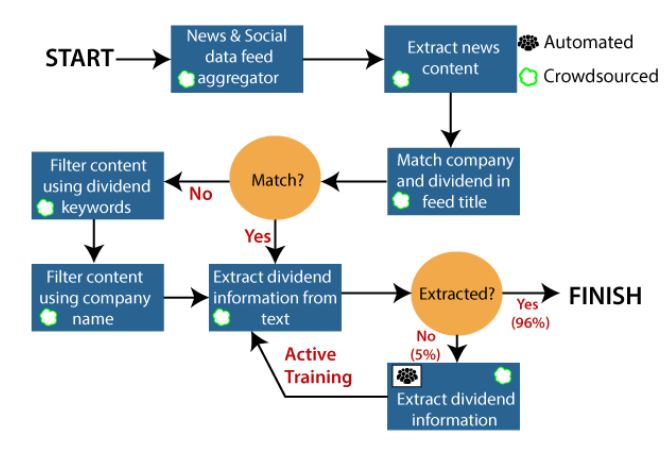
3. Explain the concept of “Cognitive Automation” in WorkFusion.
Ans:
Cognitive automation in WorkFusion refers to using artificial intelligence and machine learning algorithms to enable automation systems to learn and adapt to new scenarios. This allows the platform to handle unstructured data, make decisions, and perform tasks beyond rule-based automation.
4. How does Cognitive Automation differ from traditional automating data extraction in workfusion?
Ans:
| Aspect | Cognitive Automation | Traditional Data Extraction in WorkFusion | |
| Definition |
Uses AI and machine learning to handle complex, unstructured data, adapting to changes intelligently. |
Relies on rules for extracting data from structured sources, lacking adaptability to varied formats. | |
| Data Handling | Processes diverse data sources like emails and documents, extracting information intelligently. | Primarily designed for structured data, suited for consistent formats like tables or databases. | |
| Learning Capability |
Continuously learns and improves accuracy through machine learning algorithms. |
Relies on predefined rules, lacking continuous learning capabilities. | |
| Complexity of Tasks | Suited for complex tasks involving natural language understanding and varied data formats. | Efficient for simpler, rule-based tasks with standardized data. |
5. How does WorkFusion support end-to-end automation across various business processes?
Ans:
WorkFusion offers end-to-end automation by combining RPA, AI, and ML in a unified platform. It allows organisations to automate complex processes across departments, from data extraction and document processing to decision-making tasks, resulting in improved efficiency and reduced manual intervention.
6. Explain the concept of “Bot Learning” in WorkFusion’s RPA.
Ans:
Bot Learning in WorkFusion refers to the ability of robotic process automation (RPA) bots to learn and adapt to changes in processes without explicit programming. This is achieved through machine learning algorithms that enable bots to understand patterns and variations in data, enhancing their adaptability.
7. What role does WorkFusion play in automating rule-based decision-making processes?
Ans:
WorkFusion automates rule-based decision-making processes by employing RPA to execute predefined rules. Additionally, its AI capabilities enable the platform to learn from historical data, making it capable of handling exceptions, variations, and evolving decision-making criteria.
8. How does WorkFusion handle unstructured data in automation processes?
Ans:
WorkFusion uses advanced natural language processing and machine learning to handle unstructured data. By understanding the context and meaning of unstructured information, the platform can extract valuable insights and automate tasks that involve processing data in various formats, such as emails or documents.
9. What is “Bot Orchestration,” and why is it essential in WorkFusion?
Ans:
Bot Orchestration in WorkFusion refers to coordinating and managing multiple bots to execute complex workflows seamlessly. It is crucial for optimising efficiency and ensuring that different automated tasks are completed synchronised, enhancing overall process performance.
10. Explain how WorkFusion ensures security in automated processes.
Ans:
WorkFusion ensures security in automated processes through various measures. It employs encryption protocols to secure data transmission, access controls to restrict unauthorised usage, and audit trails to monitor bot activities. Additionally, compliance with industry standards enhances overall security.
11. What is the significance of “Smart Process Understanding” in WorkFusion’s automation capabilities?
Ans:
Innovative Process Understanding in WorkFusion involves the platform’s ability to comprehend and adapt to dynamic processes. Through machine learning, it continuously analyses and understands variations in data and process patterns, allowing for more adaptive and intelligent automation.
12. How does WorkFusion contribute to improving operational efficiency in organisations?
Ans:
WorkFusion improves operational efficiency by automating repetitive tasks, reducing errors, and enabling employees to focus on more value-added activities. Its intelligent automation capabilities optimise workflows, accelerate processes, and enhance productivity across various business functions.
13. Explain the role of WorkFusion in automating data reconciliation processes.
Ans:
WorkFusion automates data reconciliation processes by leveraging its AI-powered data extraction capabilities. It can compare and reconcile data from various sources, identifying discrepancies and ensuring data accuracy, which is crucial for financial and operational reconciliation tasks.
14. How does WorkFusion assist in automating complex financial processes?
Ans:
WorkFusion automates complex financial processes, including invoice processing, using AI algorithms to extract relevant information from invoices. It captures data accurately, matches it against predefined rules, and seamlessly integrates with financial systems, reducing manual effort and errors.
15. What role does WorkFusion play in enhancing customer service through automation?
Ans:
WorkFusion enhances customer service by automating routine tasks such as data entry, document processing, and response generation. This allows customer service representatives to focus on more complex and value-driven interactions, improving overall customer satisfaction.
16. How does WorkFusion handle exceptions and variability in automated processes?
Ans:
WorkFusion addresses exceptions and variability by incorporating machine learning models that enable bots to learn from historical data and adapt to changing scenarios. This adaptive capability ensures that the automation remains robust even in the presence of unforeseen variations in processes.
17. Explain the concept of “Pre-trained Machine Learning Models” in WorkFusion.
Ans:
WorkFusion utilises pre-trained machine learning models to expedite the automation implementation process. These models come pre-loaded with knowledge and can be fine-tuned for specific tasks, saving time and resources in developing machine learning capabilities from scratch.
18. What is the role of WorkFusion in automating HR processes, such as candidate screening?
Ans:
WorkFusion automates HR processes like candidate screening by leveraging AI to analyse resumes, extract relevant information, and match candidate profiles against job requirements. This accelerates recruitment, reduces manual effort, and enhances HR efficiency.
19. How does WorkFusion support compliance in highly regulated industries?
Ans:
WorkFusion supports compliance in highly regulated industries by providing audit trails, encryption, and access controls to ensure data security and transparency. It automates compliance checks, reducing the risk of errors and ensuring adherence to industry regulations.
20. What role does WorkFusion play in improving the accuracy of data-driven decision-making?
Ans:
WorkFusion contributes to data-driven decision-making by automating data extraction and processing. Ensuring accurate and timely data availability enhances the reliability of insights and analytics, enabling organisations to make informed decisions based on trustworthy information.
21. Explain the concept of “Machine Learning Auto-Tuning” in WorkFusion.
Ans:
Machine Learning Auto-Tuning in WorkFusion automatically adjusts machine learning models based on performance feedback.This continuous tuning process optimises model accuracy, ensuring that the models evolve and adapt to changes in data patterns over time.
22. How does WorkFusion handle cross-functional collaboration in automation initiatives?
Ans:
WorkFusion promotes cross-functional collaboration by providing a unified platform where different teams can collaborate on automation projects. It facilitates communication, knowledge sharing, and coordinated efforts to ensure successful automation implementations across various business functions.
23.What is the role of “Dynamic Case Management” in WorkFusion?
Ans:
Dynamic Case Management in WorkFusion involves the adaptive handling of cases based on changing conditions. It allows for flexible and emotional responses to varying scenarios within automated processes, ensuring that the automation remains effective in diverse and evolving situations.
24. How does WorkFusion leverage data analytics for process optimization?
Ans:
WorkFusion leverages data analytics to monitor and analyse the performance of automated processes. It provides insights into bottlenecks, efficiency, and areas for improvement, enabling organisations to optimise their processes for better overall performance continuously.
25. How does WorkFusion contribute to data-driven decision-making processes in healthcare?
Ans:
WorkFusion automates data-driven decision-making processes in healthcare by handling tasks such as patient data extraction, insurance claims processing, and medical records analysis. This reduces administrative burden, enhances accuracy, and allows healthcare professionals to focus on patient care.
26. What is the significance of “Automated Learning” in WorkFusion’s intelligent automation?
Ans:
Automated Learning in WorkFusion refers to the platform’s ability to learn and adapt autonomously. It continuously analyses patterns, exceptions, and user feedback to refine its automation models, ensuring the system evolves and improves performance without manual intervention.
27. How does WorkFusion support automation integration with existing IT systems?
Ans:
WorkFusion supports seamless integration with existing IT systems through its open architecture and compatibility with various APIs. This ensures organisations can leverage automation without disrupting their IT infrastructure, promoting interoperability and data consistency.
28. Explain the role of WorkFusion in optimising supply chain processes.
Ans:
WorkFusion optimises supply chain processes by automating order processing, inventory management, and demand forecasting tasks. It enhances visibility, reduces lead times, and ensures efficient coordination among various supply chain functions, ultimately improving overall performance.
29. How does WorkFusion enhance fraud detection in financial processes?
Ans:
WorkFusion enhances fraud detection and prevention in financial processes by automating the analysis of financial transactions. It uses machine learning to identify patterns indicative of fraud, improving the accuracy and speed of fraud detection while reducing false positives.
30. How does WorkFusion enhance automation scalability?
Ans:
WorkFusion contributes to the scalability of automation initiatives by providing a centralised platform for managing and scaling automation across different business functions. Its modular and flexible architecture allows organizations to expand automation implementations to meet growing demands effectively. Additionally, its ability to learn and adapt enables scalability without sacrificing efficiency or accuracy.
31. How does WorkFusion handle unattended automation processes?
Ans:
- Enables unattended bots to execute tasks without human intervention.
- Supports scheduling for automated processes during non-business hours.
- Provides logging and reporting features for monitoring unattended executions.
- Ensures security measures, such as encryption, for unattended operations.
- Improves overall operational efficiency through unattended automation.
32. What role does WorkFusion play in automating repetitive tasks in finance?
Ans:
- Automates data entry, reconciliation, and financial reporting.
- Enhances accuracy in invoice processing and expense management.
- Supports compliance checks and regulatory reporting automation.
- Reduces manual effort in financial data extraction and analysis.
- Improves efficiency in financial operations through automation.
33. How does WorkFusion address integrating legacy systems with modern automation processes?
Ans:
- Provides compatibility with various APIs for seamless integration.
- Allows interaction with legacy systems through connectors.
- Ensures data consistency and coherence between legacy and new systems.
- Supports the coexistence of traditional and modern IT infrastructure.
- Facilitates a phased approach for transitioning to automated processes.
34. Explain the concept of “Cognitive Document Automation” in WorkFusion.
Ans:
- It involves using AI to understand and process unstructured documents.
- Utilises machine learning for accurate data extraction from diverse documents.
- Enhances automation capabilities in document-heavy processes.
- Enables the recognition and analysis of patterns in unstructured content.
- Improves document processing efficiency through cognitive automation.
35. How does WorkFusion contribute to improving compliance in regulated industries?
Ans:
- Automates compliance checks and validation processes.
- Provides audit trails and logs for regulatory reporting.
- Ensures secure handling of sensitive data to meet compliance standards.
- Enables real-time monitoring of compliance-related activities.
- Reduces the risk of errors and non-compliance through automated checks.
36. What is the role of WorkFusion in automating customer onboarding processes?
Ans:
- Automates data entry and verification during customer registration.
- Enhances KYC (Know Your Customer) processes through automation.
- Streamlines document processing for identity verification.
- Accelerates customer onboarding by reducing manual tasks.
- Improves accuracy and compliance in customer data management.
37. How does WorkFusion facilitate the creation of automated workflows?
Ans:
- Provides a visual interface for designing and customising workflows.
- Supports the drag-and-drop creation of automation processes.
- Allows for the integration of various automation components in workflows.
- Enables the orchestration of tasks in a logical sequence.
- Enhances collaboration among teams in designing complex workflows.
38. Explain the role of WorkFusion in handling data privacy and GDPR compliance.
Ans:
- Implements robust encryption and access controls for data protection.
- Enables compliance with GDPR through configurable settings.
- Provides features for data anonymization and pseudonymization.
- Supports automated data audits and consent management.
- Ensures transparency in data processing to meet privacy standards.
39. How does WorkFusion utilise machine learning in automating data extraction?
Ans:
- Trains machine learning models to recognize patterns in data.
- Improves accuracy in extracting relevant information from unstructured content.
- Adapts to variations in document formats and layouts.
- Reduces the need for manual intervention in refining extraction rules.
- Enhances the efficiency of data extraction through continuous learning.
40. What is the significance of “Bot Resilience” in WorkFusion’s automation approach?
Ans:
- It involves the ability of bots to adapt to changes in processes.
- Ensures bots can handle variations and exceptions without disruptions.
- Improves overall system reliability in dynamic business environments.
- Reduces the need for constant manual intervention in bot management.
- Enhances the sustainability of automated processes over time.
41. How does WorkFusion support the automation of data migration processes?
Ans:
- Facilitates the extraction and transformation of data from source systems.
- Automates the loading of data into target systems or databases.
- Ensures data consistency and integrity during the migration process.
- Provides error handling and logging for transparent data migration.
- Reduces downtime and manual effort in large-scale data migrations.
42. Explain the “Adaptive Learning” concept in WorkFusion’s RPA.
Ans:
- It involves the ability of bots to adapt based on user feedback and exceptions.
- Utilises machine learning algorithms for continuous improvement.
- Enhances the adaptability of bots to changes in processes or data patterns.
- Reduces the need for manual reprogramming through adaptive learning.
- Improves the resilience and effectiveness of automated tasks.
43. What role does WorkFusion play in automating quality assurance processes?
Ans:
- Automates testing and validation tasks in software development.
- Enhances accuracy in quality assurance through automated checks.
- Supports the identification and reporting of defects in applications.
- Reduces manual effort in regression testing and test case execution.
- Improves overall software quality through automated QA processes.
44. How does WorkFusion ensure transparency in the decision-making process of automated systems?
Ans:
- Provides detailed logs and audit trails of bot activities.
- Allows users to trace and understand each step of automated processes.
- Ensures visibility into decision points and data used by bots.
- Enhances user confidence in the accuracy and fairness of automated decisions.
- Supports compliance with transparency requirements in various industries.
45. What is the role of WorkFusion in automating IT service management processes?
Ans:
- Automated incident resolution, request fulfilment, and change management.
- Enhances efficiency in handling IT service desk tasks through RPA.
- Improves response times and reduces manual effort in IT service operations.
- Ensures accuracy in data entry and updates within IT service systems.
- Supports the seamless integration of automation into ITSM workflows.
46. How do we handle the security of sensitive data during automation processes?
Ans:
- Implements encryption protocols to secure data in transit and at rest.
- Adheres to industry standards for data security and privacy.
- Provides role-based access controls to restrict unauthorised access.
- Enables secure credential management for bots and users.
- Supports compliance with data protection regulations in different regions.
47. Explain the role of WorkFusion in automating data-driven decision-making in retail.
Ans:
- Automates inventory management, order processing, and pricing updates.
- Enhances demand forecasting through data-driven analytics.
- Improves accuracy in supply chain decisions through automation.
- Supports personalised marketing strategies based on customer data.
- Reduces manual effort in retail operations, improving efficiency.
48. What is the significance of “Bot Workspaces” in WorkFusion’s automation platform?
Ans:
- Provides isolated environments for designing and testing automation.
- Facilitates collaboration among automation teams within dedicated workspaces.
- Ensures the separation of development and production environments.
- Improves version control and management of automation projects.
- Enhances overall governance and control over bot deployment.
49. How does WorkFusion handle multi-language processing in automated tasks?
Ans:
- Utilises natural language processing (NLP) to understand and process text in multiple languages.
- Supports language-specific data extraction and analysis.
- Enhances accuracy in tasks such as sentiment analysis and document translation.
- Enables organisations to deploy bots for tasks in diverse linguistic environments.
50. What role does WorkFusion play in automating customer feedback analysis?
Ans:
- Automates the extraction and analysis of customer feedback from various sources.
- Utilises sentiment analysis to categorise feedback as positive, negative, or neutral.
- Improves response times to customer concerns through automated workflows.
- Enhances customer experience by identifying trends and areas for improvement.
- Reduces manual effort in processing and analyzing large volumes of feedback.
51. How does WorkFusion support the automation of human resources processes?
Ans:
- Automates tasks such as resume screening and candidate onboarding.
- Enhances accuracy in HR data management through automation.
- Improves efficiency in employee onboarding and offboarding.
- Supports compliance checks and regulatory reporting in HR processes.
- Reduces administrative burdens in various HR functions.
52. Explain the role of WorkFusion in automating data extraction from emails.
Ans:
- Utilises machine learning to extract relevant data from emails.
- Supports the automation of tasks such as order processing and invoice handling.
- Enhances efficiency in handling large volumes of email-based data.
- Reduces manual effort in email-based communication and data entry.
- Improves accuracy in extracting structured and unstructured data from emails.
53. How does it contribute to the automation of healthcare billing processes?
Ans:
- Automates data entry and verification in healthcare billing systems.
- Improves accuracy in processing insurance claims through automation.
- Supports compliance checks in healthcare billing procedures.
- Reduces billing errors and accelerates reimbursement processes.
- Enhances overall efficiency in healthcare financial operations.
54. What is the role of WorkFusion in automating supply chain visibility processes?
Ans:
- Automates tasks related to order processing, shipment tracking, and inventory management.
- Enhances visibility into supply chain operations through real-time data extraction.
- Improves coordination among different elements of the supply chain.
- Supports demand forecasting and optimization of inventory levels.
- Reduces delays and inefficiencies in supply chain processes through automation.
55. How does WorkFusion handle the automation of procurement processes in organisations?
Ans:
- Automates purchase requisitions, order processing, and invoice reconciliation.
- Enhances accuracy in procurement data management through automation.
- Supports compliance checks and vendor management in procurement.
- Reduces manual effort in procurement tasks, improving efficiency.
- Improves overall procurement cycle times and cost-effectiveness.
56. Explain the “Bot Diagnostics” concept in WorkFusion’s automation monitoring.
Ans:
- Involves tools for diagnosing and resolving issues in bot executions.
- Provides detailed logs and error reports for troubleshooting.
- Facilitates proactive monitoring of both performance and health.
- Supports analysis of exception cases and variability in automated tasks.
- Improves the overall reliability and maintainability of computerized processes.
57. What role does it play in automating data cleansing and normalization processes?
Ans:
- Automates the identification and correction of data inconsistencies.
- Enhances accuracy in data cleansing through machine learning algorithms.
- Supports the normalisation of data formats and structures.
- Reduces the manual effort required for data cleaning and validation.
- Improves data quality and integrity through automated cleansing processes.
58. How does WorkFusion support the automation of marketing analytics processes?
Ans:
- Automates data extraction and analysis for marketing campaigns.
- Utilises machine learning for customer segmentation and targeting.
- Enhances accuracy in measuring marketing ROI through automation.
- Improves efficiency in analysing large datasets for marketing insights.
- Supports the optimization of marketing strategies based on data-driven analytics.
59. What is the significance of “Template-less Automation” in WorkFusion’s document processing?
Ans:
- It involves the ability to process documents without predefined templates.
- Utilises machine learning to understand and extract data from diverse document formats.
- Reduces the need for manual setup and configuration in document automation.
- Enhances adaptability to variations in document layouts and structures.
- Improves efficiency in document-heavy processes through template-less automation.
60. How does WorkFusion contribute to automating regulatory compliance processes in finance?
Ans:
- Automates compliance checks and validation against regulatory requirements.
- Provides audit trails and documentation for regulatory reporting.
- Ensures accuracy and consistency in compliance-related data management.
- Reduces the risk of non-compliance through automated checks and monitoring.
- Improves efficiency in adapting to changes in regulatory frameworks through automation.
61. How does WorkFusion stand out from competitors in intelligent automation?
Ans:
WorkFusion stands out from competitors by offering a comprehensive intelligent automation platform that seamlessly integrates robotic process automation (RPA) with artificial intelligence (AI) and machine learning (ML). Its unique selling proposition lies in the unified approach to automating rule-based and cognitive tasks, allowing organisations to achieve end-to-end automation across complex business processes.
62. Explain the role of “Process Discovery” in WorkFusion’s automation strategy.
Ans:
WorkFusion’s Process Discovery is a crucial component that leverages AI to analyse and identify automation opportunities within business processes. It observes how employees interact with applications and suggests areas for automation. This proactive approach streamlines the automation journey, ensuring that organisations can identify and prioritise the most impactful processes for automation.
63. How does WorkFusion tackle “Automation Fatigue” in long-term implementations?
Ans:
WorkFusion mitigates automation fatigue by incorporating “Bot Resilience” features. Bots within the platform are designed to adapt to process changes, reducing the need for constant manual intervention when alterations occur. This adaptive capability ensures sustained effectiveness over time, minimizing the burden on human operators and promoting the longevity of automated processes.
64. What does “Hyper Automation” mean in WorkFusion’s future automation vision?
Ans:
WorkFusion envisions “Hyper Automation” as the next evolution of intelligent automation. It goes beyond traditional RPA by combining various automation technologies, including AI, ML, and process mining. This holistic approach aims to create a hyperconnected automation ecosystem, fostering seamless collaboration between humans and bots to achieve unparalleled efficiency and agility in business operations.
65. How does WorkFusion handle AI ethics, especially in decision-making?
Ans:
WorkFusion strongly emphasises ethical AI by promoting transparency and explainability in automated decision-making. The platform provides detailed logs and audit trails, allowing users to trace and understand each decision point. This commitment to openness aligns with ethical AI principles, ensuring automated systems are accountable and free from biases that could impact decision outcomes.
66. How does WorkFusion manage automation across hybrid environments?
Ans:
WorkFusion executes automation in hybrid environments by offering a flexible and open architecture. The platform supports seamless integration with both cloud-based and on-premises systems through APIs. This flexibility ensures organisations can deploy and manage automation across diverse IT infrastructures, enabling a cohesive and interoperable automation strategy.
67. How does WorkFusion foster automation democratisation?
Ans:
WorkFusion promotes the democratisation of automation by providing a user-friendly interface that allows business users, not just IT specialists, to design and implement automation workflows. The platform’s visual design tools and low-code capabilities empower employees across different departments to actively participate in automation initiatives, fostering a culture of collaboration and innovation.
68. What is the role of “Continuous Learning” in WorkFusion’s intelligent automation?
Ans:
Continuous Learning in WorkFusion refers to the platform’s ability to adapt and improve without extensive manual intervention. The system continuously analyses data patterns, user feedback, and exceptions, refining its machine-learning models. This dynamic learning process ensures that the automation remains agile and effective despite evolving business requirements and challenges.
69. How does WorkFusion integrate with blockchain and emerging tech?
Ans:
WorkFusion supports the integration of automation with emerging technologies, including blockchain, through its flexible architecture. The platform can leverage APIs to connect with blockchain networks, enabling secure and transparent transactions. This integration enhances traceability, security, and data integrity within automation—processes, particularly in industries where blockchain is gaining prominence.
70. Explain the “Bot Federation” concept in WorkFusion’s automation ecosystem.
Ans:
Bot Federation in WorkFusion refers to the collaborative interaction of multiple bots within a unified automation framework. This concept allows different bots to work together seamlessly, orchestrating complex workflows that involve diverse tasks. Bot Federation enhances the scalability and versatility of automation initiatives, enabling organisations to achieve higher efficiency and productivity.
71. How does WorkFusion manage compliance in evolving regulatory landscapes?
Ans:
WorkFusion excels in managing compliance in highly regulated industries by providing a robust automation platform with adaptable compliance features. The system supports automated compliance checks and validation against changing regulatory requirements. Additionally, its continuous learning capabilities enable organisations to adapt to evolving frameworks swiftly, ensuring sustained compliance in dynamic regulatory landscapes.
72. How does WorkFusion automate data migration during organisational transitions?
Ans:
WorkFusion plays a pivotal role in automating data migration processes during organisational transitions by streamlining data extraction, transformation, and loading (ETL). The platform ensures data consistency and integrity, reducing the risk of errors during migration. Automated data migration accelerates the transition process, minimises downtime, and enhances overall efficiency in handling large-scale data transfers.
73. How does WorkFusion optimise procurement processes?
Ans:
WorkFusion optimises procurement processes by automating purchase requisitions, order processing, and invoice reconciliation tasks. The platform enhances accuracy in procurement data management, supporting compliance checks and efficient vendor management. By reducing manual effort in procurement tasks, WorkFusion improves overall procurement cycle times and contributes to cost-effectiveness.
74. What is “Explainable AI” in WorkFusion’s decision-making?
Ans:
Explainable AI in WorkFusion ensures transparency and clarity in automated decision-making. The platform explains the factors influencing decisions, making the AI-driven processes understandable to users. This transparency builds trust, facilitates regulatory compliance, and allows organisations to deploy AI-powered automation while maintaining visibility into decision points confidently.
75. How does WorkFusion leverage NLP for automation enhancement?
Ans:
WorkFusion leverages natural language processing (NLP) to understand and process human language in a way that enhances automation capabilities. NLP enables the platform to interpret and act upon unstructured textual information, facilitating tasks such as document processing, sentiment analysis, and user communication. This incorporation of NLP enriches the adaptability and versatility of automated processes.
76. How does WorkFusion automate complex financial processes like risk management?
Ans:
WorkFusion excels in automating complex financial processes, including risk management and compliance reporting, by combining RPA with AI capabilities. The platform automates data extraction, analysis, and reporting tasks crucial for risk assessment and compliance checks. This enhances accuracy and accelerates the speed at which financial institutions can respond to regulatory requirements and market changes.
77. How does WorkFusion optimise healthcare operations, specifically in claims processing?
Ans:
WorkFusion optimises healthcare operations by automating claims processing and patient data management tasks. The platform streamlines data entry, verification, and compliance checks, reducing errors and improving efficiency. Automated healthcare processes contribute to faster claims processing, accurate patient data management, and overall operational excellence in the healthcare industry.
78. What is “Intelligent Document Processing” in WorkFusion?
Ans:
Intelligent Document Processing in WorkFusion uses AI and machine learning to extract meaningful information from unstructured documents. This capability is applied in various applications such as invoice processing, contract management, and legal document analysis. By understanding the content of documents, WorkFusion’s Intelligent Document Processing enhances accuracy and efficiency in handling diverse document types.
79. How does WorkFusion support a balance between automation and human workforce in the “Digital Workforce”?
Ans:
WorkFusion facilitates the creation of a balanced “Digital Workforce” by offering a platform that integrates seamlessly with human operations. The platform’s user-friendly interface empowers business users to design and implement automation workflows collaboratively with their digital counterparts. This balanced approach ensures that automation complements human capabilities, fostering a harmonious coexistence for enhanced productivity.
80. Explain the role of “AI-Powered Analytics” in WorkFusion’s intelligent automation platform.
Ans:
AI-powered analytics in WorkFusion uses AI algorithms to analyse vast datasets and derive actionable insights. This capability enhances decision-making by giving organisations a deeper understanding of their operations. WorkFusion’s AI-powered analytics contribute to data-driven strategies, identify optimization opportunities, and ensure that automation initiatives align with broader business objectives.
81. How does WorkFusion manage Automation across diverse locations and regulatory landscapes?
Ans:
WorkFusion addresses the challenge of managing Automation across diverse geographies and regulatory landscapes through its adaptable architecture. The platform can be configured to comply with different regulatory requirements, ensuring consistency in automation implementations. Additionally, its cloud-based capabilities facilitate centralised control and monitoring of automation initiatives across global locations, promoting a standardized yet flexible approach.
82. Explain the significance of “Bot Governance” in WorkFusion’s automation ecosystem.
Ans:
Bot Governance in WorkFusion refers to the set of policies, controls, and procedures that govern the deployment and operation of bots within the automation ecosystem. This ensures bots adhere to compliance standards, security protocols, and ethical guidelines. Effective Bot Governance enhances accountability, transparency, and reliability in executing automated tasks.
83. How does WorkFusion contribute to automating intricate logistics and supply chain processes?
Ans:
WorkFusion is pivotal in automating logistics and supply chain processes by streamlining tasks such as order processing, shipment tracking, and inventory management. The platform enhances visibility, coordination, and responsiveness within the supply chain. By automating complex logistics processes, WorkFusion contributes to reduced lead times, improved accuracy, and overall supply chain operations optimization.
84. How does WorkFusion ensure the security of sensitive data in Automation?
Ans:
WorkFusion prioritises the security of sensitive data processed during Automation by implementing robust measures. This includes encryption protocols to secure data in transit and at rest, role-based access controls to restrict unauthorized access, and secure credential management for both bots and users. These security measures ensure the confidentiality and integrity of sensitive information within automated processes.
85. What is the role of “Bot Diagnostics” in WorkFusion’s Automation?
Ans:
Bot Diagnostics in WorkFusion involves tools and features that facilitate real-time diagnosis and resolution of issues during bot executions. This capability ensures proactive monitoring of bot performance, identifies exceptions and provides detailed logs for troubleshooting. Bot Diagnostics contribute to automated processes’ overall reliability, maintainability, and resilience.
86. How does WorkFusion optimise customer service through Automation?
Ans:
WorkFusion optimises customer service operations by automating tasks such as data entry, document processing, and response generation. This allows customer service representatives to focus on more complex and value-added interactions, enhancing overall customer satisfaction. Automation in customer service contributes to faster response times, reduced errors, and improved efficiency in addressing customer inquiries and requests.
87. What is “Template-less Automation” in WorkFusion’s document processing?
Ans:
Template-less Automation in WorkFusion refers to the platform’s ability to process documents without relying on predefined templates. Instead of requiring manual setup for each document type, the system utilises machine learning to understand and extract data from diverse document formats. This approach enhances adaptability, reduces the need for manual configuration, and improves efficiency in document-heavy processes.
88. How does WorkFusion address the challenge of scaling automation initiatives?
Ans:
WorkFusion supports the scalability of automation initiatives by providing a centralised platform for managing and scaling Automation across different business functions. The platform’s modular and flexible architecture allows organisations to expand automation implementations efficiently. Additionally, its adaptive learning capabilities ensure scalability without compromising efficiency or accuracy as automation initiatives grow.
89. What is the role of “Cognitive Automation” in WorkFusion’s processes?
Ans:
Cognitive Automation in WorkFusion involves using AI and machine learning algorithms to handle unstructured data. By understanding the context and meaning of unstructured information, the platform can extract valuable insights and adapt to variations in data formats. Cognitive Automation enhances adaptability, making WorkFusion well-suited for tasks involving diverse and unstructured content processing.
90. What is the significance of “Bot Learning” in WorkFusion’s RPA?
Ans:
Bot Learning in WorkFusion’s RPA refers to the ability of bots to learn and adapt to changes in processes without explicit programming. Through machine learning algorithms, bots can understand patterns, exceptions, and variations in data, enhancing their adaptability. Bot Learning reduces the need for constant manual intervention, ensuring that automated processes remain resilient and effective in dynamic business environments.
91. How does WorkFusion ensure data security during the automation process?
Ans:
- Implements robust encryption protocols for data in transit and at rest.
- Enforces role-based access controls to restrict unauthorised access.
- Secures credentials for both bots and human users.
- Adheres to industry standards and compliance regulations.
- Provides audit trails for comprehensive monitoring of data handling
92. What is the role of “Bot Workspaces” in WorkFusion’s Automation?
Ans:
- Offers dedicated environments for designing and testing Automation.
- Enhances collaboration among team members within isolated workspaces.
- Separates development and production environments for better control.
- Improves version control and project management.
- Supports a structured approach to both deployment and governance.
93. How does WorkFusion manage dependencies in complex automation workflows?
Ans:
- Provides visual tools for mapping and managing dependencies.
- Supports a drag-and-drop interface for intuitive workflow design.
- Enables the integration of various automation components seamlessly.
- Facilitates the orchestration of tasks in a logical and interconnected manner.
- Offers transparency in dependency relationships for better workflow understanding.


